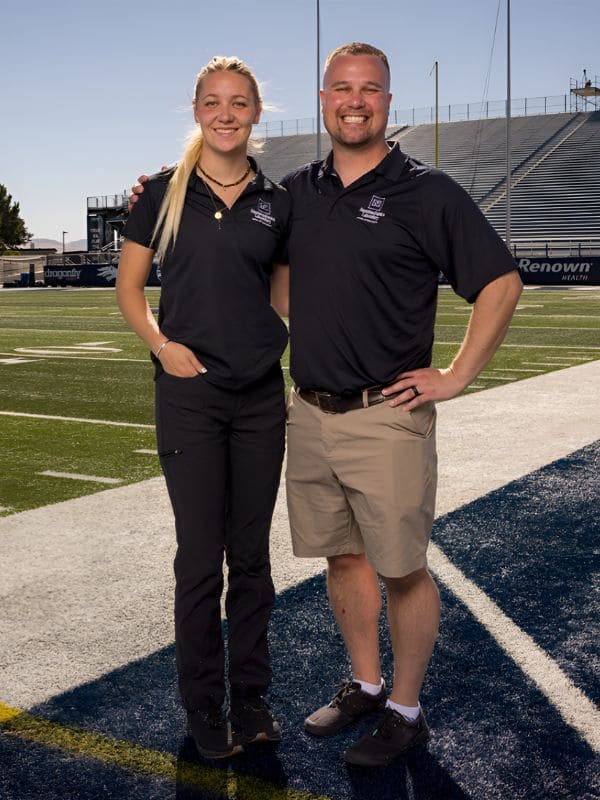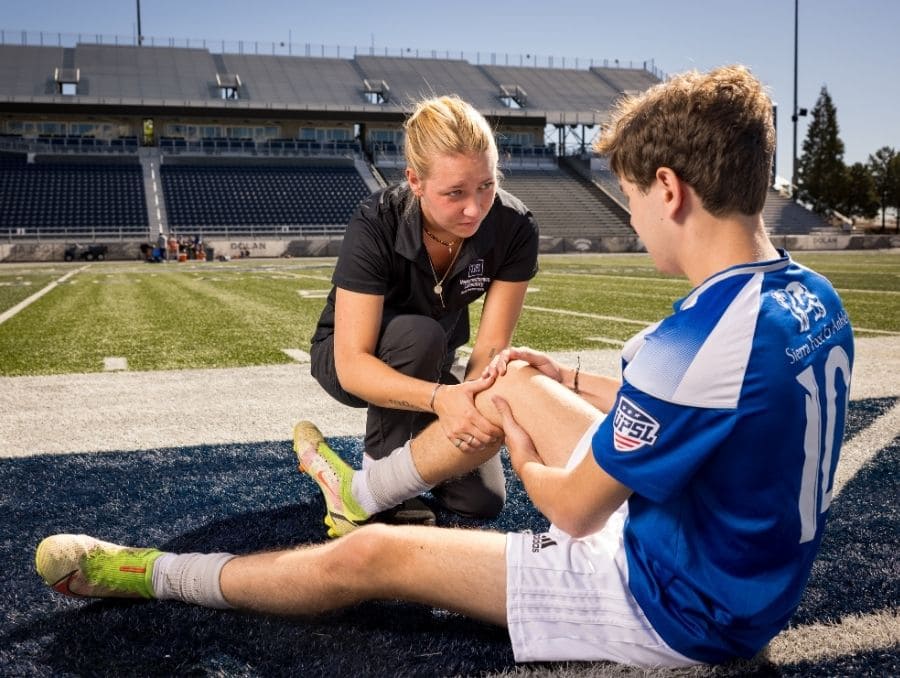High school freshman Nicholas Murray was minutes away from advancing to the finals when his wrestling opponent grabbed his foot and twisted. In seconds, championship-bound Murray went from varsity wrestler to multiple months on crutches and knee surgery for a torn meniscus and partial ligament tears.
And this wasn’t the last injury for the multi-sport athlete, who competed year-round in football, wrestling and track. Beyond typical injuries like shin splints and sprains, Murray sustained a spinal injury during a football game that temporarily paralyzed his lower body.
“We didn’t have athletic trainers on the sidelines,” he said. “I wasn’t spine-boarded. I didn’t get the right care. And I’ve carried the long-term effects ever since.”
Those experiences shaped his decision to enter the field of kinesiology and dedicate his work to injury prevention and public health. “I want to make sure the next generation of elementary and high school student-athletes don’t have to go through what I did,” he said.
Launching the innovATE project
As fall sports return, Murray is leading the charge to change that as School of Public Health associate professor and kinesiology graduate program director. Backed by the University of Connecticut’s Korey Stringer Institute’s innovATE project — “AT” for athletic trainer &nmash; the School of Public Health is placing a certified athletic trainer at Wooster High School to support student-athletes. The program launched this fall, and Neuromechanics Athletics Trainer Zoe Haddox ’21 (community health sciences) is already bringing her expertise to the sidelines. As the project and public support grow, the School plans to expand the program to other Washoe County campuses.

“This isn’t just about sports,” said Murray, who is principal investigator on the project. “It’s about keeping student-athletes healthy and active by having qualified medical professionals available to provide care, guidance and support for them, their teammates and families.”
The innovATE project provides funding to underserved schools to hire athletic trainers, a critical but often missing piece in student sports safety. According to Murray, fewer than 1% of high school athletes go on to play at the collegiate level, yet millions participate in youth sports each year without dedicated medical support. Athletic trainers are educated to recognize and respond to concussions, fractures and other serious injuries. They also help manage return-to-play and return-to-class decisions, monitor long-term recovery and support overall student health.
Expanding access to athletic training for high school sports
For Murray, who is also the current director of the University of Nevada, Reno’s Neuromechanics Laboratory, the mission is personal. “Every kid deserves to play safely,” he said. “We want this to be the start of a bigger movement that helps make full-time, salaried athletic trainers standard at every Nevada high school.”
Christianne Eason, president of sport safety and education for the Korey Stringer Institute, praised the University’s long-term vision and statewide impact. “What impressed us most about the University of Nevada, Reno School of Public Health’s application was the sustainability plan. Dr. Murray is building strong partnerships with local school districts and showed a deep understanding of the community’s needs in northern Nevada.”
“By placing athletic trainers in schools, we’re not only protecting young athletes, we’re investing in the health, safety, and potential of an entire generation. The innovATE project will be expanding access to care where it’s needed most. It’s a powerful reminder that public health extends beyond academia and into the everyday lives of our communities,” said Dean of the School of Public Health Muge Akpinar-Elci.
Eason notes, “It’s about more than just taping ankles. Athletic trainers help prevent injuries before they happen, provide care and rehabilitation, and are prepared to respond to emergencies. They serve as a critical link between students, coaches, parents and the broader health care system” In underserved communities, trainers often become the first point of medical contact, not just for athletes but for entire families.
“This is what public health looks like,” Murray said. “It’s meeting people where they are — on the field, on the court and in the community.”
